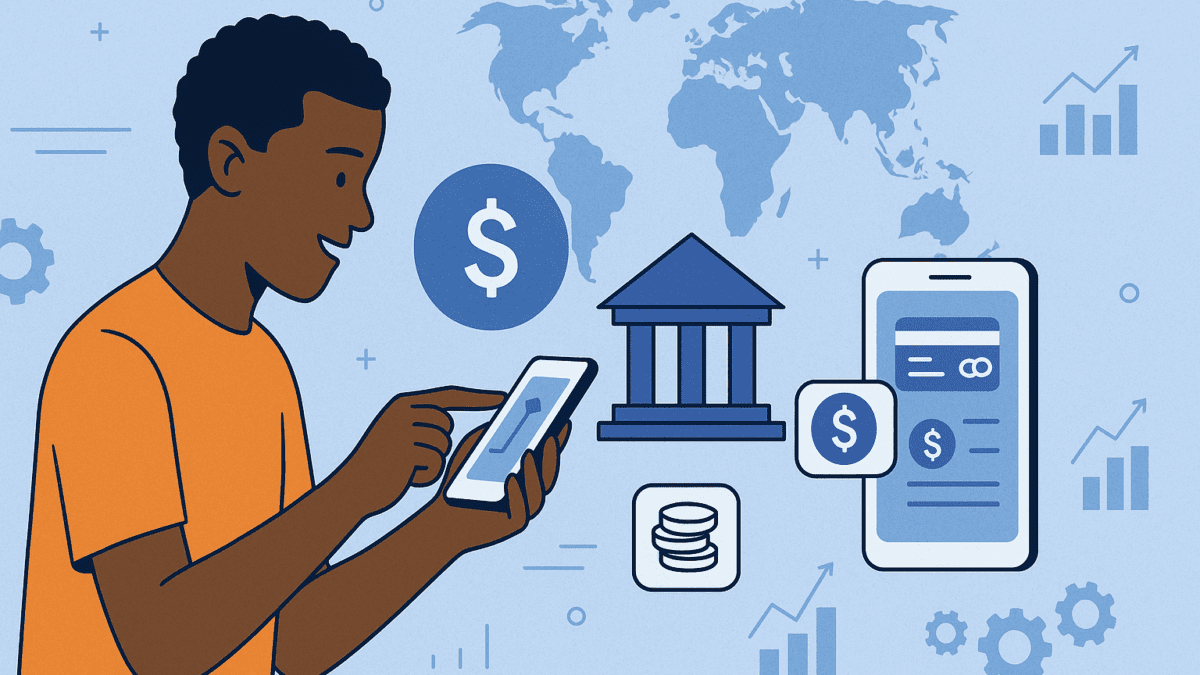FinTech in Emerging Markets: How Digital Finance Is Driving Financial Inclusion in 2025
Table of Contents
Introduction
Financial access is a fundamental building block of economic empowerment. Yet, in many emerging markets, millions of people remain unbanked or underbanked—without access to savings accounts, credit, insurance, or investment tools. In 2025, FinTech is playing a pivotal role in closing this gap and bringing formal financial services to the previously excluded.
With the rise of mobile connectivity, artificial intelligence, and decentralized technologies, digital finance is driving financial inclusion at an unprecedented scale.
What Is Financial Inclusion?
Financial inclusion means ensuring individuals and businesses—regardless of income, geography, or background—have access to useful and affordable financial products and services.
According to the World Bank, over 1.4 billion adults remained unbanked as of 2022. The numbers are more concentrated in parts of Africa, South Asia, and Latin America, where traditional banks have limited reach.
FinTech’s Role in Bridging the Gap
FinTech is democratizing finance by offering mobile-first, low-cost, and user-friendly solutions. These innovations allow users to send money, access loans, and manage savings—even without a formal bank account.
Key Drivers of FinTech Inclusion in Emerging Economies:
- Mobile Penetration:
Smartphone usage continues to surge. In countries like India, Nigeria, and Kenya, mobile phones are the gateway to financial access. - Digital Wallets & Mobile Money:
Platforms like M-Pesa (Kenya) and Paytm (India) allow users to store, send, and receive money without needing a bank. - Alternative Credit Scoring:
Startups use AI and behavioral data (like phone usage or utility bill payments) to determine creditworthiness, bypassing traditional credit scores. - Blockchain & DeFi:
Decentralized platforms offer peer-to-peer lending, secure transactions, and remittances with lower fees—ideal for users in areas lacking robust financial infrastructure.
Real-World Success Stories
- M-Pesa – Kenya’s Mobile Money Revolution: Launched in 2007, M-Pesa has revolutionized Kenya’s economy. Today, over 96% of households use the platform for everything from school fees to business payments. It has also expanded to Tanzania, Ghana, and South Africa.
- Jana Small Finance Bank & UPI in India: India’s Unified Payments Interface (UPI) processed over 11 billion transactions in June 2025 alone. Platforms like PhonePe and Google Pay empower even rural users to transact seamlessly. Small finance banks, like Jana and AU, have emerged as digital-first institutions serving low-income customers.
- Tala & Branch – Microloans for the Underserved: Apps like Tala (operating in Kenya, the Philippines, and Mexico) offer microloans based on mobile data, with approval times as short as 5 minutes. These loans help individuals fund education, healthcare, or grow microbusinesses.
Key FinTech Sectors Fueling Inclusion
Lending Tech
- Microloans and BNPL (Buy Now, Pay Later) for low-income earners.
- AI-based credit scoring to assess risk using digital footprints.
Mobile Banking & Digital Wallets
- Instant KYC onboarding via eKYC and biometric verification.
- Wallet-to-wallet transfers and merchant payments via QR codes.
InsurTech
- Usage-based, low-premium health and crop insurance for rural populations.
- Insurance claim processing via AI and blockchain to reduce fraud.
Remittances & Cross-Border Payments
- Startups using blockchain and stablecoins to cut transaction fees and delays (e.g., SendFriend, RippleNet).
Barriers to Financial Inclusion
While FinTech opens doors, it’s not without challenges:
- Digital Literacy: Many users are unfamiliar with apps or wary of online transactions.
- Cybersecurity & Fraud: As users adopt digital tools, so do bad actors.
- Connectivity Gaps: Rural areas still lack reliable internet or mobile networks.
- Regulatory Barriers: Complex and slow-moving regulatory environments can hinder innovation.
Government & NGO Partnerships Are Key
Governments and global organizations are playing a big role in scaling FinTech inclusion.
- India’s Jan Dhan Yojana program has opened over 500 million zero-balance accounts, many connected to mobile apps.
- The Gates Foundation supports FinTech infrastructure through the Mojaloop open-source payments platform.
- The African Development Bank is investing in digital ID and credit scoring frameworks to expand access.
The Road Ahead: What to Expect by 2030
By 2030, we can expect:
- AI-powered financial coaches for rural entrepreneurs.
- Voice-based transactions in local languages.
- Smart feature phones built specifically for financial apps.
- Universal digital identities tied to blockchain-based financial records.
FinTech won’t just be about profit—it will be about purpose. The winners will be those who prioritize affordability, accessibility, and trust.
Final Thoughts
FinTech is proving to be more than a trend—it’s a transformation. In emerging markets, where traditional banks have failed to reach the last mile, digital finance is stepping up.
By lowering costs, simplifying onboarding, and harnessing mobile technologies, FinTech is turning financial inclusion into a real, measurable outcome. In 2025, we’re witnessing the rise of a new, more inclusive global economy—and FinTech is at the heart of it.
Want to Learn More About FinTech Solutions?
Explore how digital transformation and FinTech innovation are reshaping industries across the globe.
👉 Visit iTMunchFinTechsection for the latest updates
See Also: AI Is Revolutionizing B2B Content Marketing in 2025: Here’s What You Need to Know





